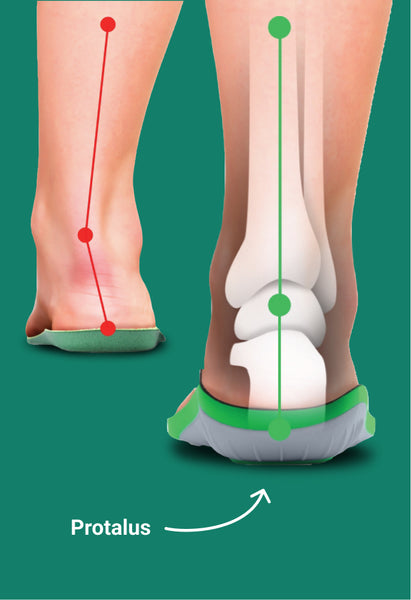Treating Ingrown Toenails
Toenails seem simple enough to take care of but sometimes things can go wrong, and the result can be very painful. One of the most common issues that people experience with their toenails is treating ingrown nails. An ingrown toenail is a nail that has grown into the skin of the toe. Many people like to create a curved nail shape when they trim their toenails but this is often the perfect way to encourage the nail to grow incorrectly.

Causes:
Ingrown toenails are often the result of a close trim that wasn’t monitored. The nail then curls downward and then grows into the skin of the toe. Ingrown toenails can also occur when shoes that are too small or too tight are worn regularly. The toenail can be damaged or pressed into the skin of the toe. Though the condition of the nail itself cannot be inherited, the shape of the toenail can. And a toenail that is poorly shaped for the toe may end up ingrown. There are also several other conditions such as diabetes and peripheral arterial disease that make ingrown toenails more likely.
Symptoms:
Ingrown toenails can seem like a small nuisance but they can be dangerous. At first the toe may feel sensitive to the touch with red, painful skin. Then the toe may swell, become hot to the touch, or even produce pus. These symptoms, especially the heat and pus, are signs of an infection. This is where an ingrown toenail can get very dangerous. Many different types of bacteria and fungus live near the feet so what began as a toenail issue could end in a MRSA infection. If you also have a condition that reduces blood flow to the area, the infection can become difficult to treat which may lead to gangrene and eventual removal of tissue. If you have a condition that makes infections hard to treat and suspect an ingrown toenail infection, it is important that you see a doctor immediately.

Treatment:
When you begin to notice that a nail is turning in, it is possible to correct the issue before you have an infection. Soaking the toe three to four times a day in warm water to soften the skin can help, along with attempting to physically remove the end of the nail from the skin. During this time it is important to wear shoes with a large toe box so that the toenail is not squeezed or pushed into the wrong position.
If you do notice an infection it is important to see a doctor who will determine a course of treatment. This may include oral antibiotics or, for more extreme cases, removal or a portion of or the whole toenail. If the toenail is removed it may take several months to grow back. In cases of chronic ingrown nails, the doctor may make the determination that the safest treatment is to remove the nail permanently.
Conclusion:
Prevention can go a long way when it comes to toenail issues. Keeping your feet clean and dry while avoiding repeated trauma to the nail from either stubbing the toe or from ill-fitting shoes is important. Nails should not be trimmed in a curved shape but be squared off at the ends, giving the nail a clear path to grow forward as opposed to into the skin. Beyond that, early action to correct an ingrown nail may prevent infection and other, more dramatic treatments.
Recommended Posts
Saying Goodbye to Leg and Foot Pain: The Power of Insoles
by Anna Heston • May 27, 2021Kick leg and foot pain to the curb with the proper shoe insoles! Discover relief now!
How Plantar Fasciitis Sufferers Find Comfort with Insoles
by Anna Heston • May 27, 2021Say goodbye to leg & foot pain! Insoles like Protalus T-100 offer relief, support & comfort.
Flat Feet: What It Really Means for Your Feet and Body
by Anna Heston • May 27, 2021Flat feet? Discover the challenges and relief with Protalus insoles! Say goodbye to pain, improve stability, and boost performance. Read more!















